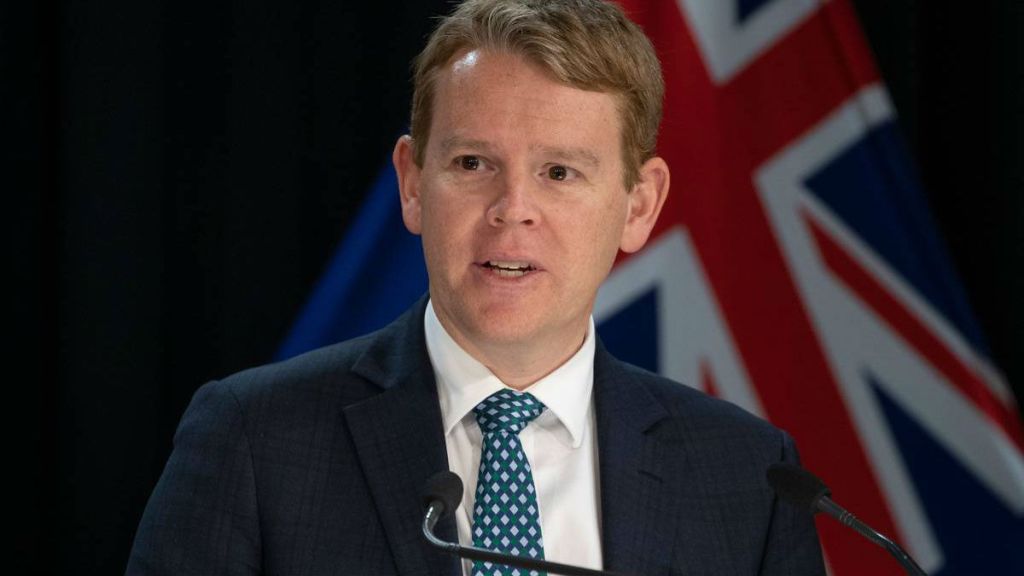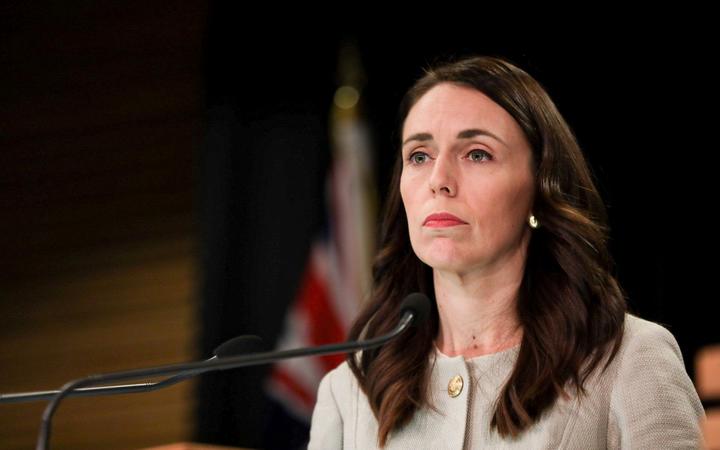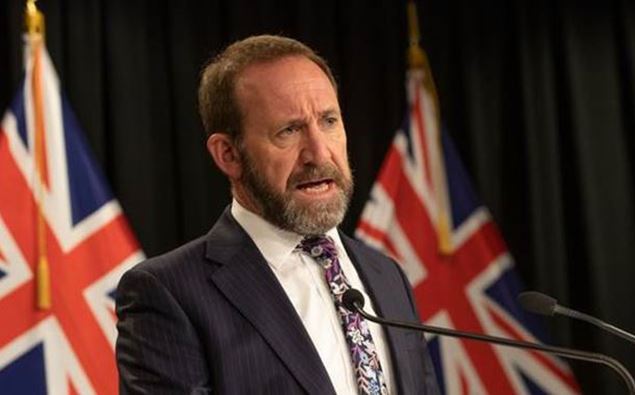
By Ian Powell – Otaihanga based Political Commentator
On 1 August 2017 Jacinda Ardern was elected leader of the opposition Labour Party in extraordinary circumstances. Opinion polls were showing Labour heading towards a massive fourth consecutive electoral defeat in September.
National meanwhile was heading towards being the fourth New Zealand government to do four consecutive terms: Liberal (1893-1912), Labour (1935-49) and National (1960-72).
Later that same day Ardern electrified political commentators, along with the whole country, by an extraordinary media conference. With passion, eloquence and coherence she promised to lead a transformational government.
Three months later she became prime minister leading a new coalition government. This was despite Labour not receiving the highest party vote (a first for a government since MMP began in 1996).
However, consistent with the principle of proportional representation, the parties that came second (Labour), third (Greens) and fourth (New Zealand First) had the numbers and sufficient policy congruence to form a new coalition government.
More significant than this ‘first’ in 2017 was another quite different ‘first’ in the 2020 election. For the first time under proportional representation, one party (Labour) got over 50% of the vote. This was unprecedented.
Reverse landslide
While few thought Labour could repeat this extraordinary feat in 2023, few also thought that it would not lead the next government.
But, equally extraordinary, Labour not only lost the election; it was thrashed. The 2020 landslide was followed three years later a reverse landslide.
Essentially Labour’s big vote in 2020 was halved in 2023. Its departing voters went four ways in varying proportions – to National, to the Greens, to Te Pati Māori (Māori Party), and to not voting.

John Campbell wrote with much passion on election outcome
There has been much political commentary on why such massive opposite landslides in consecutive elections and what the second one meant. TVNZ investigative journalist John Campbell wrote online with much passion (28 October): What the tide brought in.
Meanwhile, in The Spin Off (30 October), Victoria University senior research fellow Max Rashbrooke focussed on Labour’s post-thrashing policy development: Finding policy again.
My focus, however, is narrow. Why did Labour lose in a landslide having won in an unprecedented landside three years earlier?
Misplaced political commentary
Much of the political commentary (not all and not Campbell and Rashbrooke) has focused on the formal election campaign itself which, at times, appeared lack lustre, especially in its the early stages.
Certainly there is some substance to this focus but governments rarely lose elections because of their campaigns alone.
Some commentary focussed on the much higher financial donations to National and ACT. Certainly this gave them an advantage but this is not unusual in elections.
Money talks but on its own doesn’t win elections. It can be, and has been, overcome by winning the trust and confidence of the wider population.

Outgoing Prime Minister Chris Hipkins’ rejection of wealth tax not responsible for Labour’s thrashing
Closer to the mark (but still insufficient) is commentary about the unexpected decision of Prime Minister Chris Hipkins to reject outright and for ever and a day, a wealth tax. Essentially this was taxing a small number of very rich people skilled in tax avoidance.
Despite the Labour government revealing compelling data on this unfairness and the popular receptiveness to the idea of a wealth tax, Hipkins made a unilateral decision to pull the plug on it.
Labour would have got a higher vote had this ‘captain’s call’ not been made. But it would have only narrowed a little the gap between it and National. This is because the circumstances that led to Labour’s thrashing were set in motion well over a year ago.
Still more commentary points to Jacinda Ardern’s unexpected resignation as prime minister in January and, after an initial poll boost, the failure of her successor Chris Hipkins to make a tangible difference that made sense to enough voters.
I discussed the context of Ardern’s resignation in an earlier Political Bytes post (23 January): Sociopaths, psychopaths and the far right. My focus then was on the contribution of the far right to her resignation. But I also observed that:
Many are attributing Arden’s resignation to the volume and viciousness of the personal attacks on her, much of which was misogynous. They are right to make this conclusion but it is much deeper than this. To begin with, had her government been more successful in policy development and implementation or been doing better in the polls, she was less likely to have resigned.
In other words, the Labour government was already damaged electoral goods before her resignation.
Germinating seeds
In fact, the seeds of the 2023 reverse landslide go back to before the 2020 election. For some months after the 2017 election Labour continued to lag behind National in the polls.
Things improved with the May 2018 Budget (preceded by a ‘mini-budget’ in December which had some positive poverty reduction elements, mainly around ‘Working for Families’ tax relief.
Then came 15 March 2019 with the horrific terrorist mosque attack in Christchurch. Ardern’s high profile exemplary leadership led to Labour deservedly leaping ahead in the polls.
But, if a week is a long time in politics, then 12 months is an eternity. Prior to the arrival of the Covid-19 pandemic in March 2020, polls were showing Labour and National neck-and-neck (National marginally ahead).
The way things were trending there was a realistic prospect of Labour leading a one-term government; the first since 1972-75. Primarily this was due to the failure to both be transformational and see tangible progress on critical issues that mattered to people.

Exemplary leadership of Jacinda Ardern’s government during pandemic turned risk of electoral defeat in 2020 to unprecedented landslide
However, in response to the pandemic, Ardern and her government again demonstrated exemplary leadership.
For around 18 months it proved to be world-leading. Thousands of lives were saved as New Zealand avoided the devastation experienced in many parts of the world, including developed economies.
This was decisive in Labour’s electoral landslide in October. The public recognised and valued the competence, effectiveness and compassion of Labour’s pandemic leadership.
Labour was helped by an implosion within National’s leadership. However, at most the effect would have been to have a Labour-Green coalition rather than Labour majority government.
From technocratic social liberalism to elitism to compromised competence
In October 2020 Labour found itself in an unprecedented powerful governance position not constrained by coalition limitations. So how did things go so badly wrong a mere three years later?

Learning from Helen Clark would have helped….somewhat
For a start, particularly in respect of structural change, Ardern’s government failed to follow the successful approach of former Labour prime minister Helen Clark – under-promise and over-deliver.
But, while this would have helped, the causes of the electoral defeat go much deeper than this.
There is an incorrect but prevalent assertion that Labour is left-wing. This is wrong. It is predominantly social liberal and technocratic. Social liberalism and left-wing values can align (those with right-wing values can also be social liberal).
On 30 April I discussed in Political Bytes what being left-wing really means: Why Labour isn’t left-wing.
I noted that:
Being left-wing is about wanting to end, or even significantly curtail, the dynamic of wealth accumulation as a driver of societies. This might be through evolutionary or revolutionary means. But what it does require is transformational change.
Transformational is what the current Labour Party in government is not. It is a political party not of the left but instead of social liberal technocrats with some collectivist impulses.
Social liberal technocrats tend towards elitism and elitism compromises competence. Elitism also obstructs achieving genuine transformation.
Where policy transformation isn’t transformational
Transformation involves dramatic change in form or appearance and, in the context of Jacinda Ardern’s use of the term in August 2017, for the benefit of those affected. This can be done either by policy or legislative changes.
Two of the main transformational change Labour successfully campaigned on in the 2017 election were reducing child poverty and improving housing access and quality (including reducing homeliness).
There was a good start to the former with the passing of the Child Poverty Reduction Act 2018 which, for the first time, made the government accountable for reducing child poverty.
Certainly there has been a reduction in child poverty numbers, including through increasing the minimum wage and benefits. But, at the same time, there were significant increases to dependence on poverty support measures such as foodbanks.
Max Rashbrooke, Senior Research Fellow at Victoria University, aptly describes in The Spin Off (12 June 2023) the situation as two poverties – the numbers in poverty (declining) and the increased impoverishment of those already in poverty for a long time: Two poverties.
The net gain for the better has been incremental but has to be offset by increasing poverty entrenchment and the public understandably influenced more by what they see and hear rather than data. Barely visible incrementalism is not transformative.
Contrast this incrementalism with Virginia Falloon’s revealing Sunday Star Times article (19 November): Charities do heavy lifting in fight against the hunger of poverty.
Labour successfully highlighted homelessness and unhealthy housing in the 2017 campaign. However, it overly promoted an overly ambitious scheme called ‘Kiwi Build’ by attempting to reshape the housing market.
This was poorly thought-out with relevant expertise not considered. Inevitably it was an embarrassing high profile flop.
To be fair, overall affordable housing stock did increase noticeably; for the better. Further, new legal healthy homes requirements also helped. But this was still incremental rather than transformative.
Structural change: water, education and health
It was in the area of legislated structural change that Labour was really out of its depth, especially in respect of water, technical education and the health system.
Its technocratic elitism led to the position that restructuring trumped cultural change, business consultants knew more that those with relevant operational experience and expertise, and centralisation was the way to go.
1. Water quality
New Zealand has a serious water quality problem, along with the huge pending costs of replacing aging infrastructure. Labour inherited this. Its response was ‘Three Waters’.
The idea was laudable and there was a case for a level of centralisation beyond existing local government authorities. But it got tangled up by poor engagement with local government and confusion over co-governance.
The latter was about partnership with Māori but the use of the term ‘co-governance’ implied more. This was made worse by introducing a clumsy confusing mechanism to give it effect.
2. Technical education
In October 2017 the incoming Labour-led coalition government inherited a financial crisis with the separate technical institutes and polytechnics.
There was a need for greater national cohesion among the institutions which the existing more competitive model was hindering.
Unfortunately, instead of cohesion, then education minister Chris Hipkins went down the path of command and control through a national amalgamation of 18 institutions into one.
Further, instead of using those with relevant experience and expertise in technical education to implement the restructuring, he went for those with less.
Consequently, technical education is now in a worse financial position than it was in 2017 and severe cuts to programmes are now underway.
3. Health system
I have frequently commented on the Labour government’s bad mishandling of the health system in my health systems blog Otaihanga Second Opinion and other writings.
It arrogantly believed that that it knew more about the system than anyone else and took its main advice from business consultants.
My overall assessment is provided in the following two blogs (17 August and 27 September) based on two addresses to an oral maxilla-facial surgeons meeting in Queenstown: Health system evolution to 2022 and Getting out of this crap.

Andrew Little: former health minister best demonstrated the government’s arrogance
In some ways this arrogance was best demonstrated by Andrew Little. When justice minister he believed he knew more about the national forensic pathology service than forensic pathologists.
This led him to carve up a small well-performing service into three notionally competing parts.
As health minister he took this arrogance further. First, he insisted that he knew more about how the health system worked than those with operational and strategic experience from working in it. If it was not in accordance with his position, their advice was discarded.
Then, moving to a micro-level, he argued that he knew more about intensive care capacity during the pandemic than intensive care specialists!
Consequently the health system crisis, primarily driven by workforce shortages, in 2017 not only didn’t get better by 2023; the effects of these shortages got much worse and observably so. The system’s prevailing culture has become command and control.
So why did Labour get electorally thrashed
Labour didn’t lose the election because of weaknesses in its campaign; it didn’t lose if because of Chris Hipkins’ unwise decision to rule out a wealth tax; and it did not lose it because of Jacinda Ardern’s resignation in January.
It lost the election so badly because it could only see things through a narrow elitist and technocratic lens. This was a recipe for arrogance and disdain towards those with relevant experience and expertise.
Consequently its solutions centred on structural change through centralisation to problems and crises that were poorly understood. This was also a recipe for failure.
Despite the presence of competent ministers the Labour government was simply not good enough at implementing things and increasingly also viewed by many as incompetent.
The seeds for this recipe had been planted by early 2020 and began to flourish in the fertile soil of failure once National resolved its leadership woes in November 2021.
For more: https://politicalbytes.blog/

